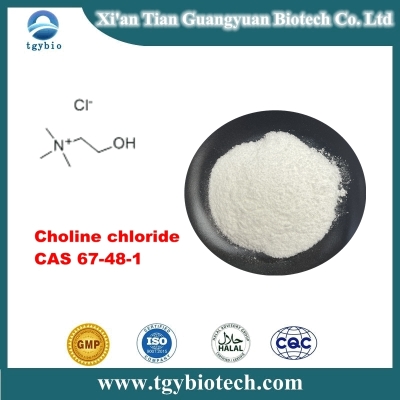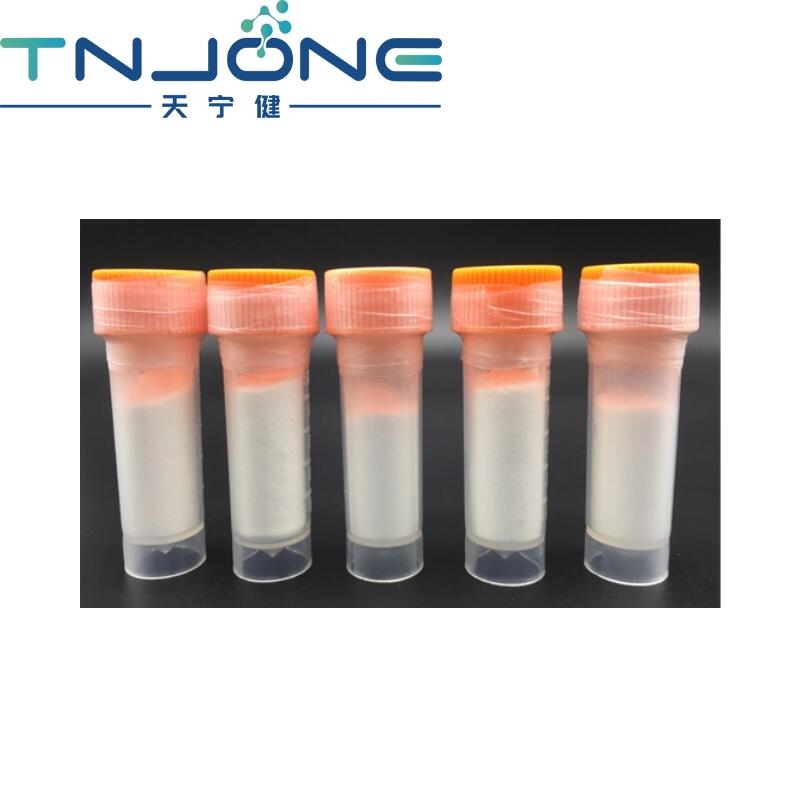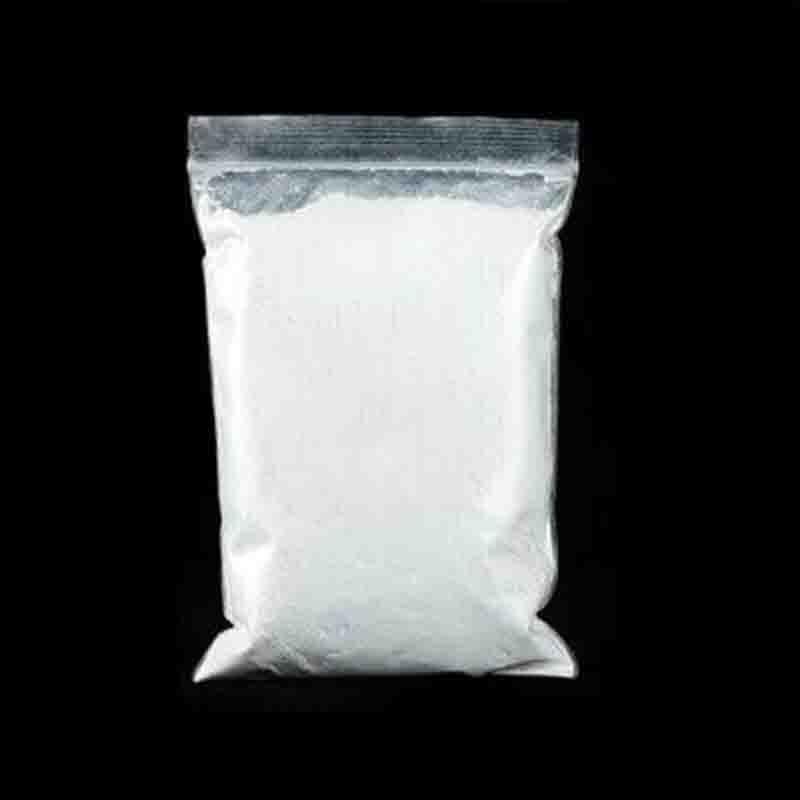-
Categories
-
Pharmaceutical Intermediates
-
Active Pharmaceutical Ingredients
-
Food Additives
- Industrial Coatings
- Agrochemicals
- Dyes and Pigments
- Surfactant
- Flavors and Fragrances
- Chemical Reagents
- Catalyst and Auxiliary
- Natural Products
- Inorganic Chemistry
-
Organic Chemistry
-
Biochemical Engineering
- Analytical Chemistry
-
Cosmetic Ingredient
- Water Treatment Chemical
-
Pharmaceutical Intermediates
Promotion
ECHEMI Mall
Wholesale
Weekly Price
Exhibition
News
-
Trade Service
Written by | Qi Editors | Repeat amplification of GGGGCC(G4C2)hexanucleotide in the enzyme mei
C9ORF72 gene is amyotrophic lateral sclerosis ( ALS) and frontotemporal dementia (FTD) are the most common genetic causes, two diseases unique pathologically characterized by dipeptide repeats formed by aggregation of abnormal translation products of these hexanucleotide repeat amplification (dipeptide repeat proteins, DRP) lesions, in which arginine-rich DPR (R-DPR) is highly toxic when overexpressed in cell or animal models, However, the factors that regulate R-DPR aggregation are unknown
.
Stress granules (SGs) are RNA/protein aggregates assembled when cells are under stress conditions, and it has been reported that R-DPR interacts with many SG proteins, and their overexpression can lead to the formation of abnormal and poorly dynamic SGs in cells under non-stress conditions [1, 2].
This contributes to the occurrence of neurodegeneration, but little is known about how these processes are regulated
.
Poly(ADP-ribose) (PAR) modifies proteins (PARylation) after translation , plays a vital role
in the assembly of SGs.
PAR is tightly regulated by PAR polymerase (PARP) and PAR glycohydrolase (PARG) (responsible for synthesis and degradation, respectively), and their overactivation induces a particular type of programmed cell death (parthanatos), deletion can cause neurodegeneration or embryonic lethality in fruit flies or mice, respectively [3-5].
Although elevated nuclear PAR in neurons in c9ALS/FTD patients has been reported, it is unclear
whether and how PAR is linked to the pathogenesis of c9ALS/FTD.
Recently, Ke Zhang's team and Jeffrey D.
Rothstein's team from the Mayo Clinic in the United States co-published a paper titled Science Translational Medicine Poly(ADP-ribose) promotes toxicity of C9ORF72 arginine-rich dipeptide repeat proteins, they demonstrate that PAR can induce R-DPR agglomeration and promote its induced SGs formation and TDP-43 aggregation, and that the absence of PAR can inhibit neurodegeneration
。 Together, they identified PAR as a promoter of R-DPR toxicity that could serve as a potential target
for the treatment of c9ALS/FTD.
The authors first treated the c9ALS/FTD fruit fly model with parp RNAi or PARG overexpression, which was able to inhibit their eye degeneration and improve motor defects
。 At the same time, the authors used glutamic acid to treat iPSC-derived neurons and control neurons in c9ALS/FTD patients, and found that neuronal death in the former was more serious, while glutamate-induced glutamate death
could be alleviated if pretreated with PARP1/2 or overexpressed by PARP1RNAi or PARG.
These findings suggest that downregulation of PAR significantly inhibits neuronal defects
in fruit flies and iPSN models of c9ALS/FTD.
Figure 1.
Loss of function of Parp/PARP1 can inhibit neurodegeneration
in the c9ALS/FTD Drosophila model.
Based on their respective protein functions, the authors continue to hypothesize whether PAR can bind to R-DPR, thereby facilitating their aggregation
.
The in vitro binding effect of the two was first confirmed by Co-IP experiments, and since RNA is negatively charged and structurally similar to PAR, it promotes R-DPR LLPS (liquid-liquid phase separation) in phosphate buffer, and the authors then test whether PAR can promote R-DPR LLPS in the same buffer
.
They observed that PAR was able to cause (GR)20 or (PR)20 to form agglomerates approximately 1 μm in diameter, and FRAP assays showed that these agglomerates could undergo partial fluorescence recovery
after photobleaching 。 In addition, they observed that knockout of PARP1 can mitigate R-DPR-induced SGs formation, and G3BP1 plays a key role in the assembly of SGs, and the authors mixed PAR with fluorescently labeled G3BP1 and found that the latter can spontaneously phase separate, and PAR can enhance G3BP1's interaction
with poly(GR).
Figure 2.
PAR can induce G3BP1 agglutination
in vitro.
SG assembly triggers TDP-43 aggregation, and poly (GR) is colocalized with TDP-43 in autopsy tissues of c9ALS/FTD patients or in SGs of cultured cells [6].
。 To confirm the role of PAR in this, the authors used turbidity assay to determine the solution after 60 minutes of incubation of poly (GR) and TDP-43, which caused a more significant increase in turbidity compared with the control, indicating that PAR can promote poly(GR)-induced TDP-43 aggregation
.
To better explore the relevance of these findings to humans, the authors investigated the relationship between insoluble PAR, poly (GR), and TDP-43 in autopsies of frontal cortex tissue from 60 carriers of C9ORF72 repeat amplification (prenatal diagnosis of frontotemporal degeneration, or FTLD, or FTLD with motor neuron disease).
。 After adjusting for age, sex and disease, the results showed that insoluble PAR was positively correlated with poly (GR) and pTDP-43, further supporting the relationship between PAR and poly (GR) and TDP-43 polymerization
.
Overall, this work demonstrates that the loss of PARP1 activity inhibits the formation of SGs induced by R-DPR, and PAR promotes R-DPR agglomeration and coaggregation of poly (GR) with TDP-43, suggesting that it may contribute to the toxicity
of R-DPR.
Future studies need to focus on testing whether PARP1 KO or PARP inhibitors can improve neurodegeneration and behavioral deficits
in mammalian models.
In addition, given the important role of PAR in cell physiology, caution needs to be exercised to determine the safe dose
of PARP inhibitors before using it as a therapeutic target.
Platemaker: Eleven
1.
K.
H.
Lee, P.
Zhang, H.
J.
Kim, D.
M.
Mitrea, M.
Sarkar, B.
D.
Freibaum, J.
Cika, M.
Coughlin, J.
Messing, A.
Molliex, B.
A.
Maxwell, N.
C.
Kim, J.
Temirov, J.
Moore, R.
M.
Kolaitis, T.
I.
Shaw, B.
Bai, J.
Peng, R.
W.
Kriwacki, J.
P.
Taylor, C9orf72 dipeptide repeats impair the assembly, dynamics, and function of membraneless organelles.
Cell 167, 774–788.
e17 (2016).
2.
K.
Zhang, J.
G.
Daigle, K.
M.
Cunningham, A.
N.
Coyne, K.
Ruan, J.
C.
Grima, K.
E.
Bowen, H.
Wadhwa, P.
Yang, F.
Rigo, J.
P.
Taylor, A.
D.
Gitler, J.
D.
Rothstein, T.
E.
Lloyd, Stress granule assembly disrupts nucleocytoplasmic transport.
Cell 173, 958–971.
e17 (2018).
3.
S.
Hanai, M.
Kanai, S.
Ohashi, K.
Okamoto, M.
Yamada, H.
Takahashi, M.
Miwa, Loss of poly(ADPribose) glycohydrolase causes progressive neurodegeneration in Drosophila melanogaster.
Proc.
Natl.
Acad.
Sci.
U.
S.
A.
101, 82–86 (2004).
4.
S.
A.
Andrabi, N.
S.
Kim, S.
W.
Yu, H.
Wang, D.
W.
Koh, M.
Sasaki, J.
A.
Klaus, T.
Otsuka, Z.
Zhang, R.
C.
Koehler, P.
D.
Hurn, G.
G.
Poirier, V.
L.
Dawson, T.
M.
Dawson, Poly(ADPribose) (PAR) polymer is a death signal.
Proc.
Natl.
Acad.
Sci.
U.
S.
A.
103, 18308–18313 (2006).
5.
D.
W.
Koh, A.
M.
Lawler, M.
F.
Poitras, M.
Sasaki, S.
Wattler, M.
C.
Nehls, T.
Stöger, G.
G.
Poirier, V.
L.
Dawson, T.
M.
Dawson, Failure to degrade poly(ADPribose) causes increased sensitivity to cytotoxicity and early embryonic lethality.
Proc.
Natl.
Acad.
Sci.
U.
S.
A.
101, 17699–17704 (2004).
6.
C.
N.
Cook, Y.
Wu, H.
M.
Odeh, T.
F.
Gendron, K.
JansenWest, G.
del Rosso, M.
Yue, P.
Jiang, E.
Gomes, J.
Tong, L.
M.
Daughrity, N.
M.
Avendano, M.
CastanedesCasey, W.
Shao, B.
Oskarsson, G.
S.
Tomassy, A.
McCampbell, F.
Rigo, D.
W.
Dickson, J.
Shorter, Y.
J.
Zhang, L.
Petrucelli, C9orf72 poly(GR) aggregation induces TDP43 proteinopathy.
Sci.
Transl.
Med.
12, eabb3774 (2020).
C9ORF72 gene is amyotrophic lateral sclerosis ( ALS) and frontotemporal dementia (FTD) are the most common genetic causes, two diseases unique pathologically characterized by dipeptide repeats formed by aggregation of abnormal translation products of these hexanucleotide repeat amplification (dipeptide repeat proteins, DRP) lesions, in which arginine-rich DPR (R-DPR) is highly toxic when overexpressed in cell or animal models, However, the factors that regulate R-DPR aggregation are unknown
.
Stress granules (SGs) are RNA/protein aggregates assembled when cells are under stress conditions, and it has been reported that R-DPR interacts with many SG proteins, and their overexpression can lead to the formation of abnormal and poorly dynamic SGs in cells under non-stress conditions [1, 2].
This contributes to the occurrence of neurodegeneration, but little is known about how these processes are regulated
.
Poly(ADP-ribose) (PAR) modifies proteins (PARylation) after translation , plays a vital role
in the assembly of SGs.
PAR is tightly regulated by PAR polymerase (PARP) and PAR glycohydrolase (PARG) (responsible for synthesis and degradation, respectively), and their overactivation induces a particular type of programmed cell death (parthanatos), deletion can cause neurodegeneration or embryonic lethality in fruit flies or mice, respectively [3-5].
Although elevated nuclear PAR in neurons in c9ALS/FTD patients has been reported, it is unclear
whether and how PAR is linked to the pathogenesis of c9ALS/FTD.
Recently, Ke Zhang's team and Jeffrey D.
Rothstein's team from the Mayo Clinic in the United States co-published a paper titled Science Translational Medicine Poly(ADP-ribose) promotes toxicity of C9ORF72 arginine-rich dipeptide repeat proteins, they demonstrate that PAR can induce R-DPR agglomeration and promote its induced SGs formation and TDP-43 aggregation, and that the absence of PAR can inhibit neurodegeneration
。 Together, they identified PAR as a promoter of R-DPR toxicity that could serve as a potential target
for the treatment of c9ALS/FTD.
The authors first treated the c9ALS/FTD fruit fly model with parp RNAi or PARG overexpression, which was able to inhibit their eye degeneration and improve motor defects
。 At the same time, the authors used glutamic acid to treat iPSC-derived neurons and control neurons in c9ALS/FTD patients, and found that neuronal death in the former was more serious, while glutamate-induced glutamate death
could be alleviated if pretreated with PARP1/2 or overexpressed by PARP1RNAi or PARG.
These findings suggest that downregulation of PAR significantly inhibits neuronal defects
in fruit flies and iPSN models of c9ALS/FTD.
Figure 1.
Loss of function of Parp/PARP1 can inhibit neurodegeneration
in the c9ALS/FTD Drosophila model.
Based on their respective protein functions, the authors continue to hypothesize whether PAR can bind to R-DPR, thereby facilitating their aggregation
.
The in vitro binding effect of the two was first confirmed by Co-IP experiments, and since RNA is negatively charged and structurally similar to PAR, it promotes R-DPR LLPS (liquid-liquid phase separation) in phosphate buffer, and the authors then test whether PAR can promote R-DPR LLPS in the same buffer
.
They observed that PAR was able to cause (GR)20 or (PR)20 to form agglomerates approximately 1 μm in diameter, and FRAP assays showed that these agglomerates could undergo partial fluorescence recovery
after photobleaching 。 In addition, they observed that knockout of PARP1 can mitigate R-DPR-induced SGs formation, and G3BP1 plays a key role in the assembly of SGs, and the authors mixed PAR with fluorescently labeled G3BP1 and found that the latter can spontaneously phase separate, and PAR can enhance G3BP1's interaction
with poly(GR).
Figure 2.
PAR can induce G3BP1 agglutination
in vitro.
SG assembly triggers TDP-43 aggregation, and poly (GR) is colocalized with TDP-43 in autopsy tissues of c9ALS/FTD patients or in SGs of cultured cells [6].
。 To confirm the role of PAR in this, the authors used turbidity assay to determine the solution after 60 minutes of incubation of poly (GR) and TDP-43, which caused a more significant increase in turbidity compared with the control, indicating that PAR can promote poly(GR)-induced TDP-43 aggregation
.
To better explore the relevance of these findings to humans, the authors investigated the relationship between insoluble PAR, poly (GR), and TDP-43 in autopsies of frontal cortex tissue from 60 carriers of C9ORF72 repeat amplification (prenatal diagnosis of frontotemporal degeneration, or FTLD, or FTLD with motor neuron disease).
。 After adjusting for age, sex and disease, the results showed that insoluble PAR was positively correlated with poly (GR) and pTDP-43, further supporting the relationship between PAR and poly (GR) and TDP-43 polymerization
.
Overall, this work demonstrates that the loss of PARP1 activity inhibits the formation of SGs induced by R-DPR, and PAR promotes R-DPR agglomeration and coaggregation of poly (GR) with TDP-43, suggesting that it may contribute to the toxicity
of R-DPR.
Future studies need to focus on testing whether PARP1 KO or PARP inhibitors can improve neurodegeneration and behavioral deficits
in mammalian models.
In addition, given the important role of PAR in cell physiology, caution needs to be exercised to determine the safe dose
of PARP inhibitors before using it as a therapeutic target.
Original link:
http://doi.
org/10.
1126/scitranslmed.
abq3215
Platemaker: Eleven
References
1.
K.
H.
Lee, P.
Zhang, H.
J.
Kim, D.
M.
Mitrea, M.
Sarkar, B.
D.
Freibaum, J.
Cika, M.
Coughlin, J.
Messing, A.
Molliex, B.
A.
Maxwell, N.
C.
Kim, J.
Temirov, J.
Moore, R.
M.
Kolaitis, T.
I.
Shaw, B.
Bai, J.
Peng, R.
W.
Kriwacki, J.
P.
Taylor, C9orf72 dipeptide repeats impair the assembly, dynamics, and function of membraneless organelles.
Cell 167, 774–788.
e17 (2016).
2.
K.
Zhang, J.
G.
Daigle, K.
M.
Cunningham, A.
N.
Coyne, K.
Ruan, J.
C.
Grima, K.
E.
Bowen, H.
Wadhwa, P.
Yang, F.
Rigo, J.
P.
Taylor, A.
D.
Gitler, J.
D.
Rothstein, T.
E.
Lloyd, Stress granule assembly disrupts nucleocytoplasmic transport.
Cell 173, 958–971.
e17 (2018).
3.
S.
Hanai, M.
Kanai, S.
Ohashi, K.
Okamoto, M.
Yamada, H.
Takahashi, M.
Miwa, Loss of poly(ADPribose) glycohydrolase causes progressive neurodegeneration in Drosophila melanogaster.
Proc.
Natl.
Acad.
Sci.
U.
S.
A.
101, 82–86 (2004).
4.
S.
A.
Andrabi, N.
S.
Kim, S.
W.
Yu, H.
Wang, D.
W.
Koh, M.
Sasaki, J.
A.
Klaus, T.
Otsuka, Z.
Zhang, R.
C.
Koehler, P.
D.
Hurn, G.
G.
Poirier, V.
L.
Dawson, T.
M.
Dawson, Poly(ADPribose) (PAR) polymer is a death signal.
Proc.
Natl.
Acad.
Sci.
U.
S.
A.
103, 18308–18313 (2006).
5.
D.
W.
Koh, A.
M.
Lawler, M.
F.
Poitras, M.
Sasaki, S.
Wattler, M.
C.
Nehls, T.
Stöger, G.
G.
Poirier, V.
L.
Dawson, T.
M.
Dawson, Failure to degrade poly(ADPribose) causes increased sensitivity to cytotoxicity and early embryonic lethality.
Proc.
Natl.
Acad.
Sci.
U.
S.
A.
101, 17699–17704 (2004).
6.
C.
N.
Cook, Y.
Wu, H.
M.
Odeh, T.
F.
Gendron, K.
JansenWest, G.
del Rosso, M.
Yue, P.
Jiang, E.
Gomes, J.
Tong, L.
M.
Daughrity, N.
M.
Avendano, M.
CastanedesCasey, W.
Shao, B.
Oskarsson, G.
S.
Tomassy, A.
McCampbell, F.
Rigo, D.
W.
Dickson, J.
Shorter, Y.
J.
Zhang, L.
Petrucelli, C9orf72 poly(GR) aggregation induces TDP43 proteinopathy.
Sci.
Transl.
Med.
12, eabb3774 (2020).
Reprint instructions
【Original article】BioArt original article, welcome to share by individuals, reproduction is prohibited without permission, the copyright of all works published is owned by BioArt
.
BioArt reserves all statutory rights and violators will be prosecuted
.







